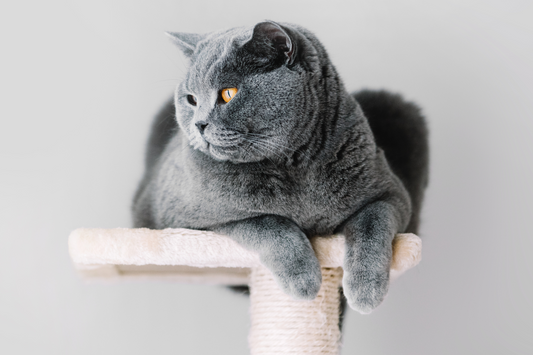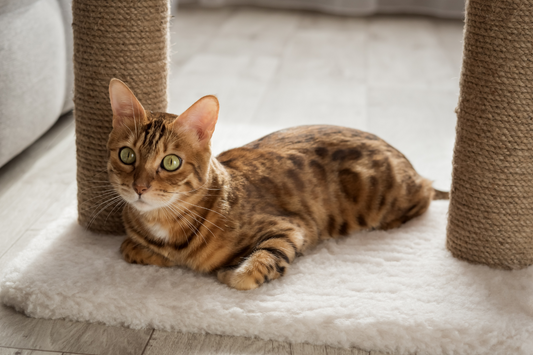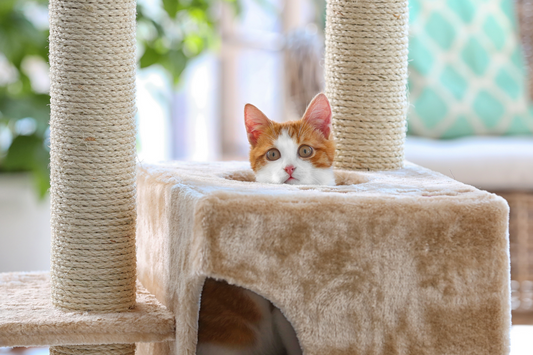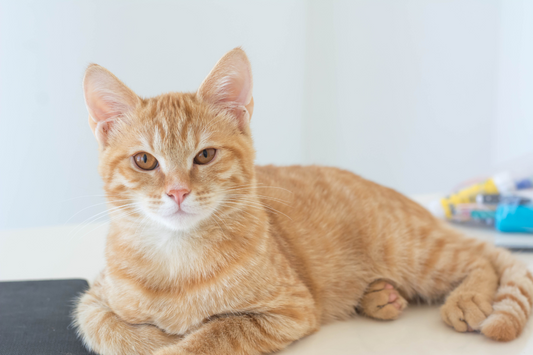
To many cat owners, scratching might look like a mischievous habit, especially when it targets furniture. But behind this behavior lies a powerful instinct with real benefits. The role of scratching in cat exercise is more than just sharpening claws; it's an essential routine that keeps your cat fit, flexible, and emotionally balanced.
Why Cats Scratch: Instinct vs. Exercise
Scratching is rooted in feline instinct. In the wild, cats scratch to mark territory, shed old claw sheaths, and keep their muscles primed for hunting. While your indoor kitty isn’t chasing prey, the instinct remains, and so does the physical need. Scratching gives cats a full-body stretch and engages their shoulders, back, and paws.
How Scratching Helps Stretch and Strengthen Muscles
When a cat digs its claws into a scratcher and pulls, it’s not just sharpening nails—it’s giving its entire upper body a workout. The motion strengthens leg and shoulder muscles, tones the core, and keeps joints limber. This daily stretch is like feline yoga, helping maintain agility as your cat ages.
Mental Stimulation and Stress Relief Through Scratching
Beyond the physical, scratching offers emotional balance. It relieves stress, frustration, and boredom, especially in indoor cats. The satisfying texture and resistance of a scratcher stimulate the senses, reduce anxiety, and create a calming routine, making it as much a mental workout as a physical one.
The Importance of Vertical and Horizontal Scratchers for Physical Variety
To support full-body exercise, variety matters. Vertical scratchers engage shoulder and back muscles, encouraging upward stretches. Horizontal scratchers work the paws and allow cats to stretch forward or down. Offering both types in different materials—like sisal, cardboard, or carpet scratchers keeps your cat physically challenged and mentally engaged.
Encouraging Scratching as Part of Daily Exercise Routines
Incorporate scratching into your cat’s routine by placing posts near sleeping spots (cats love to stretch after naps), feeding areas, or windows. Use catnip or toys to attract them to new scratchers. The goal? Turn scratching into a structured part of their daily fitness training.
Scratching Solutions: Product Picks and DIY Ideas
To support the role of scratching in cat exercise, invest in high-quality scratchers. Here are some suggestions:
1. Sisal-wrapped posts for durability and vertical stretches
2. Inclined cardboard scratchers for horizontal flexibility
3. Multi-surface scratching pads to prevent boredom
DIY lovers can repurpose cardboard boxes or wrap wooden boards in sisal rope to create custom scratch zones at home.
My Take
Understanding the role of scratching in cat exercise transforms how we view this natural behavior. It’s not destruction, it’s healthy expression. By providing the right tools and encouraging daily use, you support your cat’s physical fitness, emotional well-being, and overall happiness.











